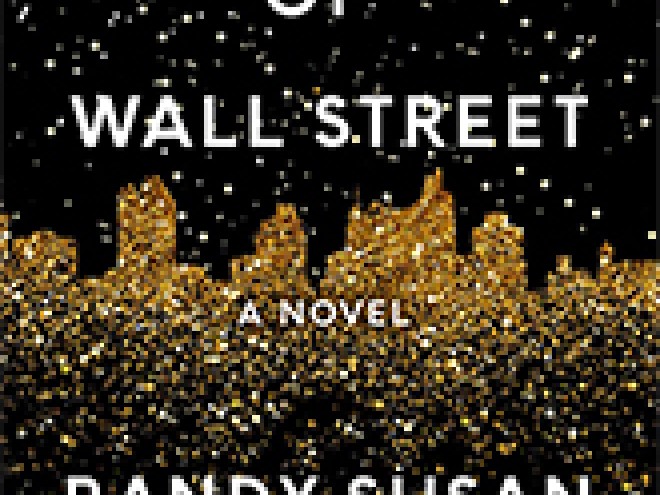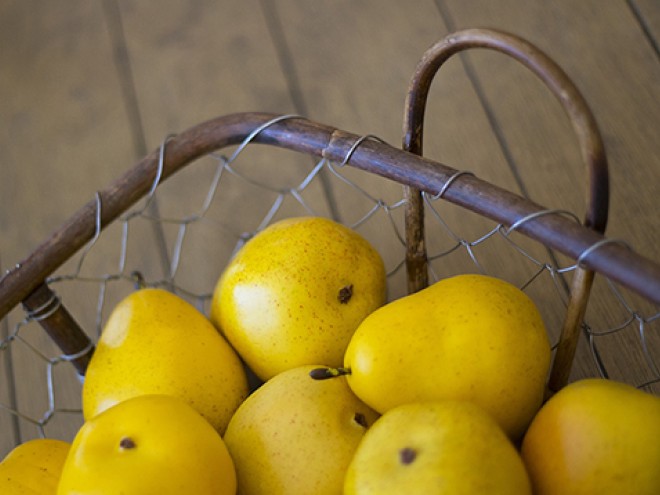with Sophie Siegel
Anna Solomon’s latest novel, Leaving Lucy Pear, delves into relations between rich and poor, Jewish and Irish in Prohibition-era New England, around the story of a baby abandoned in a pear orchard. Jewish Book Council sat down with the author to discuss her current and previous books this summer.
Sophie Siegal: Your first novel The Little Bride was very successful, however, its content is very different from that of Leaving Lucy Pear. How did you come to think of the idea behind each novel, and how did your writing process differ between the two books?
 Anna Solomon: I generally write pretty linearly and work my way to the end. The biggest difference between these two books is that the point of view for The Little Bride is a very close third-person, somewhat claustrophobic, which fits the subject matter of the book. In Leaving Lucy Pear I jumped to an omniscient narrator who can really go anywhere she wants, and kind of plays God. That was a great joy and also a challenge and probably the big leap that I made in the book, which required a lot of revision and also a lot of studying of other texts.
Anna Solomon: I generally write pretty linearly and work my way to the end. The biggest difference between these two books is that the point of view for The Little Bride is a very close third-person, somewhat claustrophobic, which fits the subject matter of the book. In Leaving Lucy Pear I jumped to an omniscient narrator who can really go anywhere she wants, and kind of plays God. That was a great joy and also a challenge and probably the big leap that I made in the book, which required a lot of revision and also a lot of studying of other texts.
Each novel started in somewhat different ways. For The Little Bride, my ideas started to form when I was on this website on Jewish woman pioneers, which that set me off on this path. For Leaving Lucy Pear, it was also a little piece of history, which I came across in a book called The Saga of Cape Ann. Cape Ann is the place where I grew up, north of Boston, and the book is about a wealthy Bostonian summering on Kaden and suffering from a nervous disorder. The protagonist is aggravated by a screeching whistle buoy that had been put in to keep fisherman and sailors from crashing into shore, and she does what I guess any well-connected person would do: she called the Navy and demanded they take out the whistle buoy, which they did, and by the next summer when she was feeling much better. But I was left with a question of what happens when the whistle buoy is out there, and what are the consequences for which this woman is responsible?
SS: The cover of the novel is beautiful; I hear there is a great story behind it…
AS: I feel so lucky for the cover. It is taken from a painting by a British artist named Laura Knight, who was quite controversial in her time. She was one of the first, if not the first, female painter to make a painting of herself that shows herself painting a nude model. This was a real challenge to restrictions on women painters at the time — they were supposed to work from casts, not nudes — and while it brought Knight a lot of flak it also made her a pioneer in the broader movement for women’s rights. I was really excited that the artist who had made the painting ended up on the cover because her story felt really in-tune with the women in my book — and myself, as well: Knight was pushing the boundaries of what a woman painter could do in her time.
Initially I saw only the front cover for the book, and it took me a while to notice that there were these boots lying on the rocks. I became fascinated with whose boots they were; there was this mystery to the image that made me even more in love with it. When they finally sent me the whole jacket and it wraps around to the book, you can actually see the woman who belongs to those boots on the back cover, looking out at the viewer. The image just grew and grew for me in terms of its meanings and the layers. I feel like the women in the painting are ultimately the same as the main characters of my novel, Bea — and at other times Emma — and Lucy Pear.
SS: The descriptions of the time period are so vivid. What kinds of historical research did you do to begin your writing?
AS: I started in the way that I think a lot of people do, which is a lot of history books and newspapers. I spent a lot of time on the microfilm in my hometown public library, looking back at old issues of the Boston Daily Times, looking at advertising, photographs, and still film, but I always find that talking with people is the most pleasurable way to get information. I spoke with one woman who had been alive during that time — she has since passed away — who talked about things like how the granite dust felt on her bare feet as she walked through the woods. I talked to someone else who was a grandson of a bootlegger and he remembered his grandfather talking about how they would blast out the walls of the courts to make these panes where they would hide all the booze.
SS: Each character in the novel faces distinct forms of gender oppression and societal expectations that affect their lives. As a Jewish woman, mother, and daughter, how do you deal with society’s expectations of you? Do you see parts of yourself in each character, and which character do you identify with most?
 AS: I do see parts of myself in each character — the Jewish ones and the non-Jewish ones: Bea grew up in this fiercely assimilationist family, as my own mother did; Emma, who has more children than she probably wants; and even Susannah Stanton, who is unable to have children. What drives each of these women is an exaggeration of feelings that I have had myself, feelings I have had at times of being overwhelmed in the transition to motherhood and my selfhood being threatened, and feelings of fear that I wasn’t going to be able to have children.
AS: I do see parts of myself in each character — the Jewish ones and the non-Jewish ones: Bea grew up in this fiercely assimilationist family, as my own mother did; Emma, who has more children than she probably wants; and even Susannah Stanton, who is unable to have children. What drives each of these women is an exaggeration of feelings that I have had myself, feelings I have had at times of being overwhelmed in the transition to motherhood and my selfhood being threatened, and feelings of fear that I wasn’t going to be able to have children.
One of the biggest challenges of becoming a mother, and a Jewish mother now, is that in some ways we have more choices than we have ever had. I could go and do anything, which doesn’t mean it wouldn’t be hard, but the options are there for me and yet… I grew up in this very feminist family; I went to a very feminist camp; I am teaching my children, both my boy and my girl, to be feminists, while at the same time I have made a marriage in which I am the one who does all of the menu-making and the cooking. What I observe in the world around me is that women constantly feel judged by somebody for the way they are balancing their work, parenting, and partnerships, and often that person is themselves. In my fiction, I seek to observe and to empathize in a way that allows my readers to not only understand the choices my characters make but respect them for those choices.
SS: Each of the characters faces life-altering decisions — most significantly abandoning one’s child, and deciding to raise an orphan as one’s own. Can you tell me any difficult decisions that you had to make as a writer while writing Leaving Lucy Pear? What advice would you give to aspiring writers?
AS: In earlier versions of the novel, I had even points of view I really wanted to dive into, including those of the crazy woman who lives up the hill from the Murphy family, and Caleb Stanton. I had so many pages of scenes that I loved and my readers also said they loved, but did not belong there. I agree with them, but those moments are hard and making that final decision and saying goodbye are hard, even when it is the right one.
My advice is that you have to keep reading and reading and reading, even as you start to write. It’s important to really see yourself as a student of the books that you read, without being afraid to stray in terms of form with those books; I wrote a lot of poetry before I ever turned to fiction and it definitely informed the way I hear language and the way I write. The biggest thing is really to work to surround yourself with a community of writers and to do that by forming a writing group where you live or finding writer workshops. The relationships that you make in those places are critical to keeping going and continuing to write through rejection and through drafts that don’t work. Having people cheering you on and people that will read for you is so important.
SS: What can we look forward to next?
AS: I am working on a new book, which I am not really able to talk about yet. It involves the Book of Esther and 1970s feminism and Brooklyn life.
Sophie Siegel is a student at Emory University interested in Holocaust Studies and Film. She worked with the Jewish Book Council as a 2016 summer intern.
Related Content:




